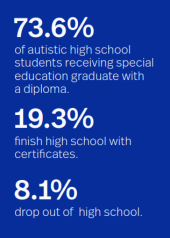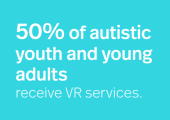Uncertainty is a major theme of The Politics of Autism. In the concluding section, I write:
A key question in autism policy evaluation is simple to pose, hard to answer: How do autistic people benefit? How much better off are they as a result of government action? While there are studies of the short-term impact of various therapies, there is surprisingly little research about the long term, which is really what autistic people and their families care about. As we saw in chapter 4, few studies have focused on the educational attainment of autistic youths. For instance, we do not know much about what happens to them in high school, apart from the kinds of classes that they take. One study searched the autism literature from 1950 through 2011 and found just 13 rigorous peer reviewed studies evaluating psychosocial interventions for autistic adults. The effects of were largely positive, though the main finding of the review is that there is a need for further development and evaluation of treatments for adults.
Many people with autism receive services through their school systems but lose access to those services and vital supports upon leaving high school. Without continuity of services, it can be more difficult for autistic adults to obtain employment, continue their education or live independently, which could potentially impact their future.
Autism by the Numbers data shows the outcomes for autistic students
who receive special education services.
- Nationally, 10% of students in special education programs receive special education services for autism. Not all autistic students qualify for special education, so there may be students who lack necessary support in school.
- 73.6% of autistic students receiving special education graduate with a high school diploma and another 19.3% finish with certificates.
- 8.1% drop out of high school, though we don’t know why.
Vocational Rehabilitation (VR) training and services provide an effective pathway to preparing autistic adolescents and teens for employment.
- Autistic students receive VR services at a lower rate than students with other disabilities, and transition-age autistic adults have lower rates of employment than those with other disabilities.
- On average, 50% of autistic youth and young adults receive VR services. This ranges from 10% in New Jersey to 77% in Oklahoma.
- Among those who received VR services in high school, 60% had a job when they left school. This range was from a low of 32% in Washington, D.C. to a high of 76% in Nebraska.
There is still work to be done to increase the number of autistic students who graduate high school and go on to find employment. We need research to further explore these questions:
- What are the longitudinal employment trends for autistic individuals?
- Why is the dropout rate so high, and how can we better support autistic students to have a positive experience in school?


